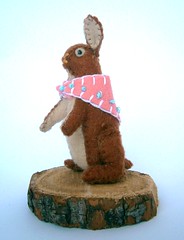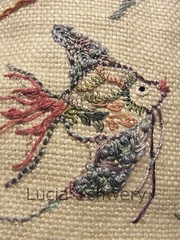Wireless Dog Fence Collar Ideas Last Minute Laminated Diaper Bag Systems Clean Jacuzzi Compare
Get training on digitizing. If you have never created embroidery designs before ... Stitch Era Universal is the embroidery software of choice for many new ... Embroidery Digitizing Software.
Thursday, December 22, 2011
Wednesday, December 14, 2011
Friday, December 9, 2011
Sunday, November 20, 2011
Friday, November 18, 2011
Saturday, November 12, 2011
Saturday, November 5, 2011
Sunday, October 30, 2011
Wednesday, October 26, 2011
Sunday, October 23, 2011
The Easy way to accomplish abstract patches.
Thursday, October 20, 2011
A Perfect World in Ribbon Embroidery and Stumpwork
!: Best Buy A Perfect World in Ribbon Embroidery and Stumpwork discounted
Brand :Rate :

Price : $25.95
Post Date : Oct 21, 2011 06:48:24
Usually ships in 1-2 business days
Monday, October 17, 2011
Wednesday, April 20, 2011
Choosing and Using Embroidery Digitizing Software
Comparing Embroidery digitizing software, you need to do a good research the various software programs, finding the right software for your needs need not be too difficult, but it's best to be aware what is available so you choose the right one.
Embroidery has come a long way since the days when our grandmothers and great-grandmothers sat hours on one piece to create their own unique masterpiece, many of these masterpieces have been handed down from generation to generation. Today machines and Computer software replicate these designs and at less than 1-10th of the time it took our grandmothers to make a good embroidered piece.
When comparing embroidery digitizing software you must ensure that you obtain embroidery software that is compatible with your Computers operating system, therefore, it is a good to know how your Computer works and its programs.
Once you have determined your needs, check the digitizing programs, some will allow you to download the images directly from computer programs, or from websites on the internet. Other programs will only allow the upload of images by using your Scanner. So look at all options and find which is best for you, your needs and computer capability should be compatible.
How limited or advanced is the embroidery digitizing software, you will need to check its capabilities, some are limited to just the basic logos, images and drawings. Others offer some more advanced options will allow you to create many intricate and interesting designs. The digitizing software packages will also allow you to check and elect thread the density, offer a variety of font options, and various stitch types plus give you all the directions.
Check on the customer support offered with the software. Would you need 24/7 online support? Or would you prefer to be able to discuss your problems with fellow enthusiasts. Some companies provide instruction manuals or have experts who can advise you and help you get the most of your software.
Next you need compare product upgrade and warranty on the software, check if has upgrade options, read the warranty to check if it gives you sufficient coverage of a reasonable length of time. Read reviews on embroidery digitizing software, compare what others have to say, you will learn a lot from other enthusiasts.
This is the first basic step to create embroidery when you make use of computer embroidery machine and or use embroidery digitizing software.
- You can purchase or create a special digitized embroidery design file on your computer
- This gives you the opportunity to be able to edit the design
- You will then load the completed design file onto the embroidery machine
- Then stabilize the fabric on an embroidery frame and set it in place it in the machine
- Switch on the machine and Monitor or check the progress of he embroidery machine as it works.
!: God Is Not One: The Eight Rival Religions That Run the World and Why Their Differences Matter !: Certificate Of Credit Counseling Quiz !: Slim Fast Weight Loss Plan Life Tips
 |
 |
 |
 |
 |
 |
 |
 |
Sponsor Links
- Great Deal Sale
- Clavinova CLP Digital Pianos
- KOI Guru Center
- Shop For Anuhea...
- Lithium Worx Gt Trimmer Edger For Sale
- Foundation Bar Assorted Colors Skateboard Deck - 8.12 X 32... Save
- Toro Snowblower Order Now
- Refurbished Boutique 9 Women's Derry Open-toe Pump...
- Save Build A Rowing Machine
- Promotion Dewalt Mitre Saw




